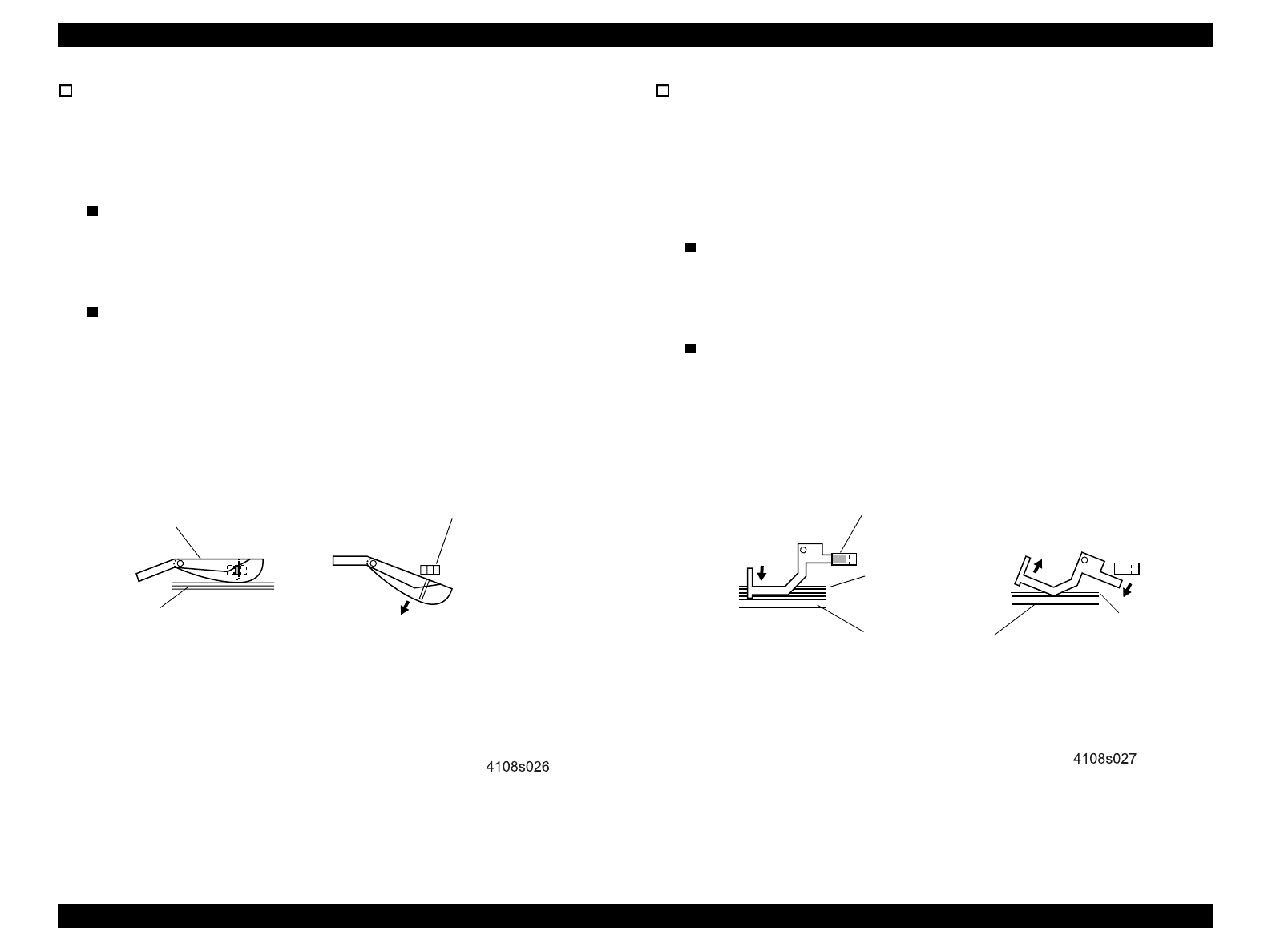
EPL-N2700 Revision A
Operating Principles Printer Mechanism Operating Principles 63
Cassette 1 Paper Empty Sensor (PC22)
This sensor detects the paper empty status of the Cassette 1. The
sensor uses a photointerrupter. When paper runs out in the Cassette 1,
paper empty occurs.
When paper is present in the paper cassette:
The sensor arm is pressed by the paper and it is lifted. So, the
projection of the sensor arm engages with the photointerrupter.
As a result, the output of the photointerrupter is “H”.
When paper runs out in the paper cassette:
The sensor arm lowers by pressing a spring so that the
projection of the sensor arm comes off the photointerrupter. As a
result, the output of the photointerrupter is “L”.
Figure 2-14. Cassette 1 Paper Empty Sensor Mechanism
Cassette 1 Paper Near Empty Sensor (PC25)
This sensor detects the paper near empty status of the Cassette 1
paper. The sensor uses a photointerrupter. As the sheets of paper
in the paper cassette decrease, the paper lifting plate in the paper
cassette lifts. When the paper lifting plate lifts exceeding a certain
point, the Cassette 1 paper near empty occurs.
When enough paper is present in the paper cassette:
The paper lifting plate is lowered. In this condition, the projection
of the sensor arm is engaged with the photointerrupter. Thus,
the output of the photointerrupter is “H”.
When the remainder of paper decreases:
The lower part of the sensor arm is pressed by the paper lifting
plate and the projection of the sensor arm comes off the
photointerrupter. Thus, the output of the photointerrupter is “L”.
Figure 2-15. Cassette 1 Paper Near Empty Sensor Mechanism
Cassette 1 Paper Empty Sensor
Light passes:
Output = L
Paper
Light is blocked:
Output = H
[Paper is present.]
[Paper empty]
Sensor Arm
Cassette 1 Paper Near Empty Sensor
Light passes:
Output = L
Paper
Light is blocked:
Output = H
[Paper is present.]
[Paper near empty]
Few paper
Paper Lifting Plate


















